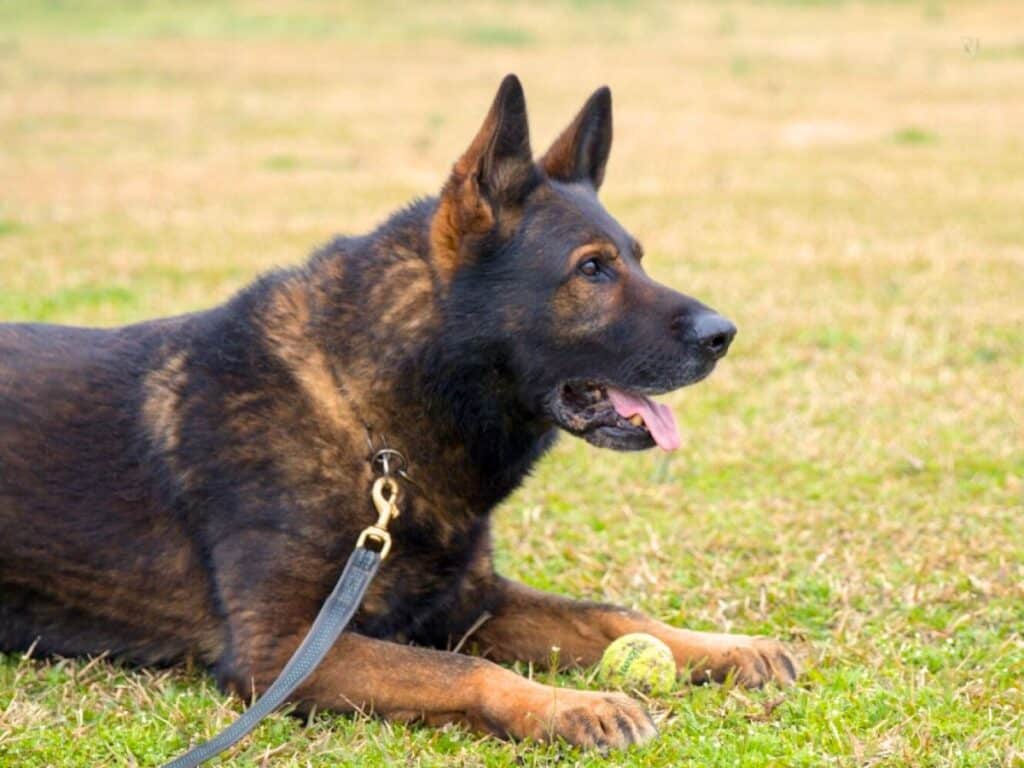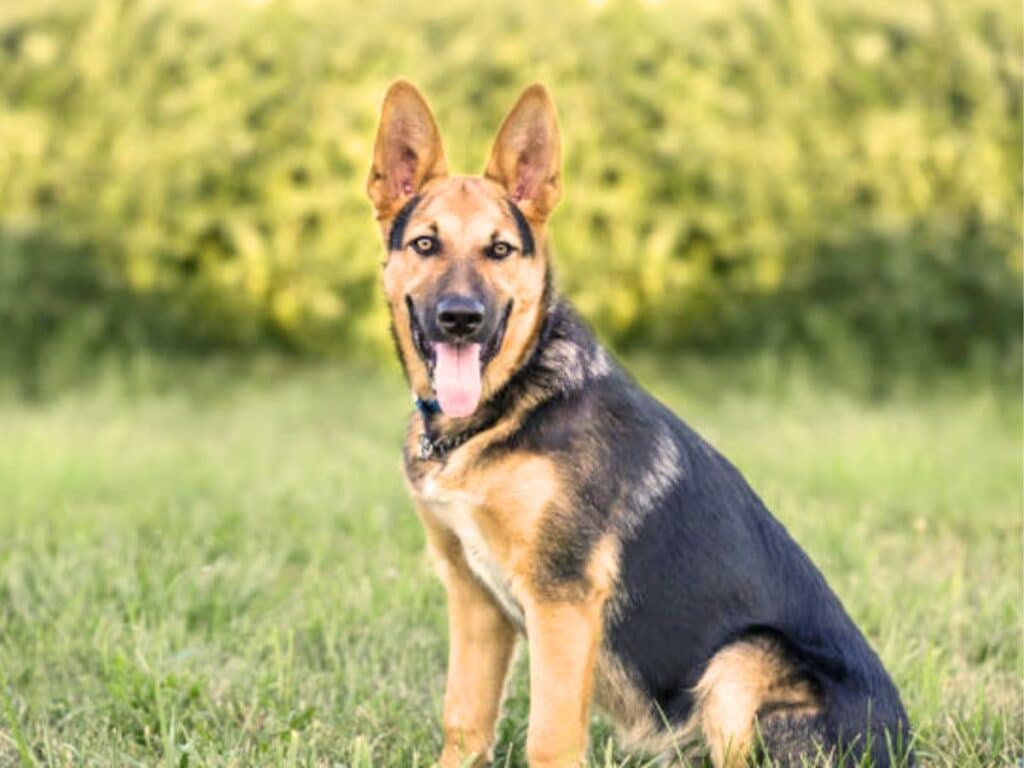Bringing home a new German Shepherd puppy or a dog is an exciting time, but can also be stressful if you’re not prepared. From puppy-proofing your home to gathering the proper supplies, it’s easy to become overwhelmed with your responsibilities to make your puppy’s transition a success.
To help you out, I am sharing my top tips on how to prepare for a GSD puppy or dog coming home with you so that the transition is as smooth as possible.
How to Prepare for a New German Shepherd Puppy
1. Puppy-proof your home
Puppies, much like curious toddlers, explore the world with their mouths, making it crucial to create a safe environment for them. Begin by removing any potential hazards, such as small objects, electrical cords, and toxic plants, from areas accessible to your puppy.
Several common household items can be toxic to puppies if ingested. Chocolate, grapes, raisins, onions, garlic, alcohol, and caffeine-containing products like coffee grounds or tea bags are just some examples of human foods that can be harmful to dogs.
Moreover, household plants such as lilies and philodendrons can also be poisonous if consumed by puppies.
Consider using baby gates to restrict access to certain rooms and secure cabinets containing household chemicals. Invest in durable and safe chew toys to redirect their chewing instincts away from your belongings.
RELATED: A Guide For Transitioning a Rescue German Shepherd Into Your Family
2. Create a comfortable space for your puppy
Whether it’s a cozy crate or a designated area with a soft bed, providing a secure and comfortable retreat allows your puppy to feel safe and secure.
Make sure the space is located in a quiet area where they can retreat for rest and relaxation. Introduce familiar scents, such as a blanket or toy from their previous environment, to offer a sense of familiarity.
This designated space serves not only as a resting place but also as a sanctuary where your puppy can retreat when they need a break or want to feel secure.
RELATED: What to Know Before Adopting a German Shepherd

3. Provide essential supplies
Before bringing your puppy home, go over a mental “new puppy checklist” with all the items you’ll need immediately after picking your puppy up and taking them home, like a leash, water bowl, or collar.
Here’s a list of essential items to have when preparing for a new puppy:
- Water and food bowls: For hydration and meals.
- Toys: Provide mental stimulation and entertainment.
- Dog first aid kit: Essential for minor emergencies.
- Poop bags and holder: For responsible waste disposal during walks.
- Healthy dog food and treats: Ensure a balanced and nutritious diet.
- Leash and collar: Essential for walks and outdoor activities.
- Dog tags: Include up-to-date identification information.
- Travel items: Consider a dog car seat or seat belt harness for safety during travel.
- Cleaning supplies: Include carpet cleaner for accidents and maintaining a clean environment.
Having these items ready will help you create a comfortable and safe space for your new puppy, setting the stage for a positive and enjoyable experience together.
RELATED: 10 Tips For Adopting A German Shepherd
4. Choose the right dog food & treats
Consult with your veterinarian to determine the most suitable puppy food that meets their nutritional needs. Puppies require a balanced diet for healthy growth and development, so choose a high-quality, age-appropriate dog food.
Look for options that list a protein source as the main ingredient. Additionally, incorporating healthy treats into your puppy’s diet can be beneficial for training and reinforcement.
Opt for treats that are specifically designed for puppies, ensuring they are both tasty and nutritious. Be mindful of the portion sizes to avoid overfeeding, and consider using treats during training sessions to reinforce positive behavior.
5. Prepare your children & family members
Begin by educating everyone about the needs and behaviors of puppies. Teach children how to interact gently with the puppy, emphasizing the importance of respecting their space and signaling when the puppy needs a break.
Establish ground rules for playtime, such as avoiding roughhousing or taking away the puppy’s toys. Encourage family members to participate in feeding, walks, and basic training to build a strong bond between them and the puppy.
It’s essential to instill a sense of responsibility, emphasizing the commitment required for the puppy’s well-being. Additionally, discuss the significance of consistent routines, including feeding schedules and designated playtime.
RELATED: Is It Safe To Adopt A German Shepherd?

6. Decide on a vet
Start by researching local veterinary practices and asking for recommendations from friends, family, or your breeder. Consider the location and accessibility of the clinic, as it should be convenient for regular check-ups and emergencies.
Schedule visits to potential veterinarians to get a feel for the clinic’s atmosphere and meet the staff. Ask about their approach to preventive care, vaccination schedules, and emergency services. Inquire about the availability of after-hours care in case of emergencies.
Check if the veterinary clinic offers additional services like grooming, boarding, or dental care. Clarify the payment policies, including fees for routine visits, vaccinations, and any potential emergencies.
7. Come up with a training & socialization plan for the puppy
Begin with basic obedience training, introducing commands like sit, stay, and come. Utilize positive reinforcement techniques, such as treats and praise, to reinforce desired behaviors.
Socialization is equally critical. Expose your puppy to various environments, people, and animals to help them develop confidence and adaptability. Arrange playdates with other friendly dogs, and gradually introduce them to different settings, sounds, and experiences.
Consider enrolling in puppy training classes or hiring a professional trainer, especially if you’re a first-time dog owner. These resources provide valuable guidance and structure for both you and your puppy.
Integrate age-appropriate toys and activities to keep your puppy mentally stimulated. Puzzle toys and interactive play not only entertain but also help prevent boredom-related behavior issues.
8. Establish a consistent routine
Dogs thrive on predictability and routine, and it helps them feel secure and confident in their surroundings. Start by setting regular feeding times, which not only supports their nutritional needs but also helps with house training.
Take your puppy outside for bathroom breaks after meals, upon waking up, and before bedtime.
Designate specific times for play and exercise to burn off their energy and promote a healthy lifestyle.
Incorporate training sessions into your daily routine to reinforce good behavior and strengthen the bond between you and your puppy.
Consistency extends to everyone in the household, so ensure that all family members follow the same routine and rules.

9. Prepare your current dog/pet for a new puppy
Before bringing the puppy home, allow your current dog to familiarize themselves with the puppy’s scent. Bring home a blanket or toy that the puppy has used.
For the initial meeting, choose a neutral territory, like a nearby park, to prevent territorial behavior. Keep both animals on a leash for control.
Supervise all interactions between the current pet and the new puppy. Positive experiences during these early meetings will help build a positive association.
Continue to provide individual attention to your existing pet. This helps reassure them that their place in the family is secure.
Treat both pets equally to prevent jealousy. Ensure they have their own food bowls, beds, and toys to avoid competition.
RELATED: How To Introduce a German Shepherd to Your New Puppy
Summary
You’ve learned how to transform your home into a safe and welcoming space for your new furry friend. By understanding potential hazards, gathering essential supplies, and establishing routines, you’re setting the stage for a smooth transition. Introducing your puppy to your household and creating consistent rules will pave the way for a harmonious coexistence with your new pet.
FURTHER READING:




